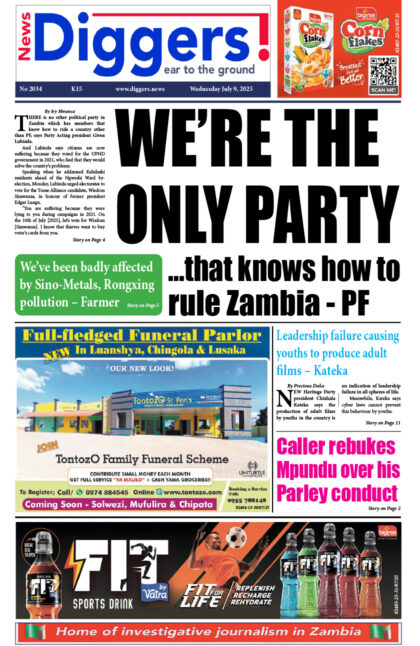In the past decade, Zambia’s once rapidly growing economy, which boasted an average growth rate of 7% between 2006 and 2010, has encountered significant slowdowns. The International Monetary Fund (IMF) now projects a modest growth of 4.3% for Zambia in 2024, against a backdrop of a challenging agricultural season and looming power deficits. This outlook is set against years of reliance on copper, which, while historically lucrative, has left the nation vulnerable to volatile global commodity prices in recent times. However, the recent discovery of gold deposits across Zambia heralds a potential turning point. This week’s piece delves into how gold could be the keystone for Zambia’s economic transformation.
Just as diversifying business ventures secures multiple revenue streams, transforming Zambia’s economy involves shifting its focus away from copper and creating income streams from several sectors of the economy which can significantly reduce the economic shocks that Zambia has faced due its high dependence on copper for both export earnings and economic growth. Economic transformation encapsulates the integration of various sectors into the production matrix and the expansion of the export array. This could significantly change the employment landscape by creating several value chains across sectors and calling upon labour.
While Zambia’s mining sector has been dominated by copper for over 100 years, the discovery of gold in the country opened a door for new economic opportunities beyond mining. In recent years, gold deposits have been discovered in several parts of the country including Mwinilunga, Mpika and Mumbwa. Yet, the full potential of these deposits remains untapped, pending further exploration. The Zambian government’s increased allocation for the Geological Survey Department in the 2024 national budget is a step in the right direction, especially if prioritized towards gold exploration.
Gold mining offers several opportunities for Zambia. For artisanal and small-scale miners who are increasingly dominating the gold subsector, there is immense potential for revenue generation and job creation. Gold can further be used as an anchor for foreign currency which would improve Zambia’s foreign currency standing and create space for the central bank’s intervention in the foreign market. Gold export can also facilitate the direct acquisition of foreign currency- thereby improving the country’s ability to meet forex demand which has been rising over time. The establishment of over 9 milling plants by ZCCM-IH, in partnership with rural development initiatives, underscores efforts to leverage gold for economic advantage.
Despite its potential, the gold sub-sector grapples with challenges. The lack of formalization for most small gold mining activities has made it difficulty harmonising mining practices which has also led to environmentally unfriendly mining practices. Smuggling of gold into neighbouring and other foreign countries has been a common practice in the gold subsector. This coupled with illegal mining in parts of the county like Mumbwa and Rufunsa has even made it harder for the government to track down mining activities and benefit through the collection of tax revenues. To help overcome these challenges, the government in 2020 set up the Zambia Gold Company Limited (ZGCL)- a mining company whose “primary objective is to develop and formalize the gold sub-sector in Zambia.” Acknowledging the role that gold can play in stabilizing the foreign exchange market, one of the objectives of the company is to increase the Bank of Zambia’s gold reserves. ZGCL’s efforts have, however, have not been without challenges. Numerous small-scale miners have voiced their discontent with the licensing procedures, which require the payment of substantial fees. They argue that these costs are driving individuals towards unauthorized activities, including smuggling and unlicensed mining.
Looking ahead, there is need to ensure that gold mining across the country is coordinated. This calls for policy recalibration— reviewing laws around licensing and granting of mining rights. Further, the concept of value addition offers promising avenues for economic transformation and diversification. Establishing gold processing facilities and encouraging the manufacture of gold-based products in Zambia can stimulate industrialization and create new economic sub-sectors. The 2020 launch of the Export Diversification Strategy in Gold and Gemstone Mining, aiming to formalize the sector and set up value addition parks, was a visionary step toward that should be actualized.
In addition, strategic deployment of gold revenues could revitalize sectors like agriculture and manufacturing, paving the way for a diversified, resilient economy. This will not only strengthen Zambia’s economic foundations but also positions it favorably on the global stage, ready to withstand market fluctuations.
Join me next week as I further the discussion to understand how the gold value chain can be enhanced in Zambia.
About the Author.
Ibrahim Kamara serves as the Head of Research at the Centre for Trade Policy and Development. He holds a bachelor’s degree in economics and finance as well as a master’s degree in public finance and taxation from the University of Lusaka. Ibrahim also served as the Coordinator for the Zambia Tax Platform until 2023.



















